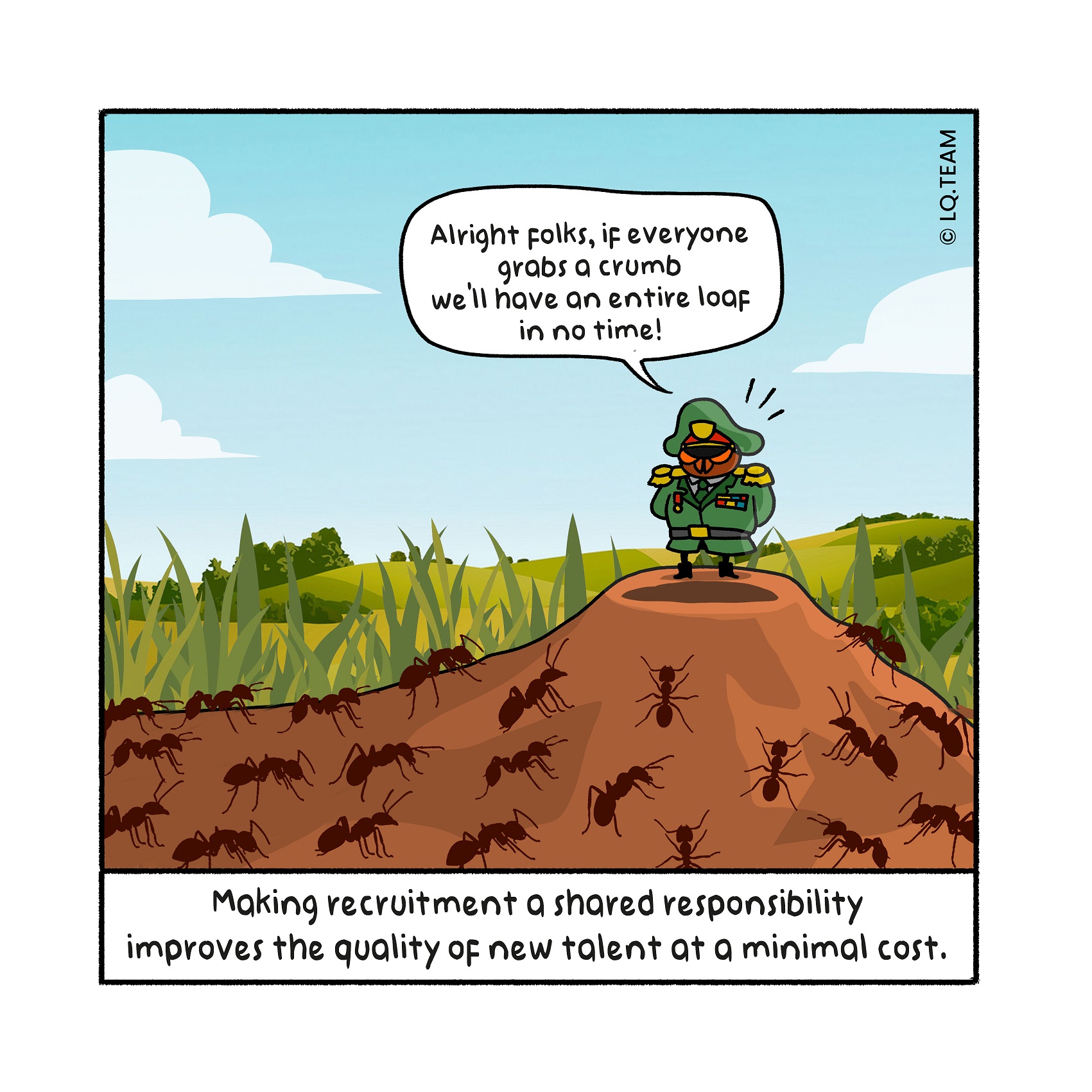
Nut to crack: How to attract new talent rapidly without paying top dollar?
Times of transition often go together with some staff mobility, while financial results are typically under pressure. What do you do when you need to hire new people? High expenditures for attracting new people are most likely un- desirable. How do you ensure the quality of new hires is as high as possible, without paying a premium price for this talent?
Nutcracker: Use the knowledge and commitment of the collective
The solution to this question is often sought in technology or externally: better algorithms and investment into (digital) search capacity. This can distract from a very effective alternative, which requires very few additional resources: us- ing the recruitment energy of all current employees within your organisation. Ignite a recruitment fire within them. It is simple, virtually free and with proven effectiveness. The example below illustrates how.
Real-life example: Think big, act small
A cosmetics company wants to grow and needs external talent to achieve its growth agenda. The recruitment budget is tight; opportunities to work with recruitment and selection agencies are limited. The operational director wonders what he can do to get the 32 vacancies filled with truly good people, quickly, and at a minimal cost.
He would like to use the combined strength of the current workforce to accomplish this mission. Therefore, he tries the following:
He meets with the company’s ceo and offers the following recommendation. The ceo should communicate that everyone in the organisation is responsible for attracting and bringing in new talent, including himself. Although that may sound like a big ask, every employee only needs to take two actions:
- Make one recommendation for a potential candidate for one of the Think of friends, former colleagues, or talented acquaintances in other organisations look ing for new opportunities.
- Mobilise one new follower of the company through posts on social
He then asks managers to repeat the request for these two actions in their departmental meetings.
These two straightforward actions made it easy for employees to contribute to the re cruitment process.
The result? An unexpected success. Within two weeks, 65 suggestions for potential candidates were submitted, 23 were interviewed, and ultimately nine positions could be filled. The costs? Nine vouchers for a nice dinner.
Even after this activation, the influx remained higher than before, partly because the management and supervisors kept discussing this topic, shared interim results about filled positions and showcased original and activating posts from employees on social media.
Tip for change leader
Prepare an overview of which new skills and capabilities you need to source externally because they are unavailable internally, for example, scrum knowledge, robotics know ledge, and extensive data analysis capabilities. Then ask one of your colleagues respon sible for recruitment to search for that specific knowledge and skills on the LinkedIn profiles of internal employees. There is a good chance you already have people walking around with that knowledge without being aware of it.
Tip for change enabler
Traditionally, hr policies have been written from a rights and obligations perspective. By rewriting those from a partnership perspective, in which you jointly take accountability as employer and employee for growth realisation, you activate the marketing and re cruiting power already existing in your organisation.
Kernel: Everyone is a recruiter
Making the responsibility for recruitment a shared responsibility usually im- proves the quality of the external talent supply at a minimal cost. It’s straight- forward, very cheap or even free, yet often forgotten in deployment.
